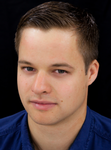Cited By
View all- Zhang YLiu YXie ZYang LLiu ZYang MZhang RKou QLin CWang WJin X(2024)DreamMat: High-quality PBR Material Generation with Geometry- and Light-aware Diffusion ModelsACM Transactions on Graphics10.1145/365817043:4(1-18)Online publication date: 19-Jul-2024


